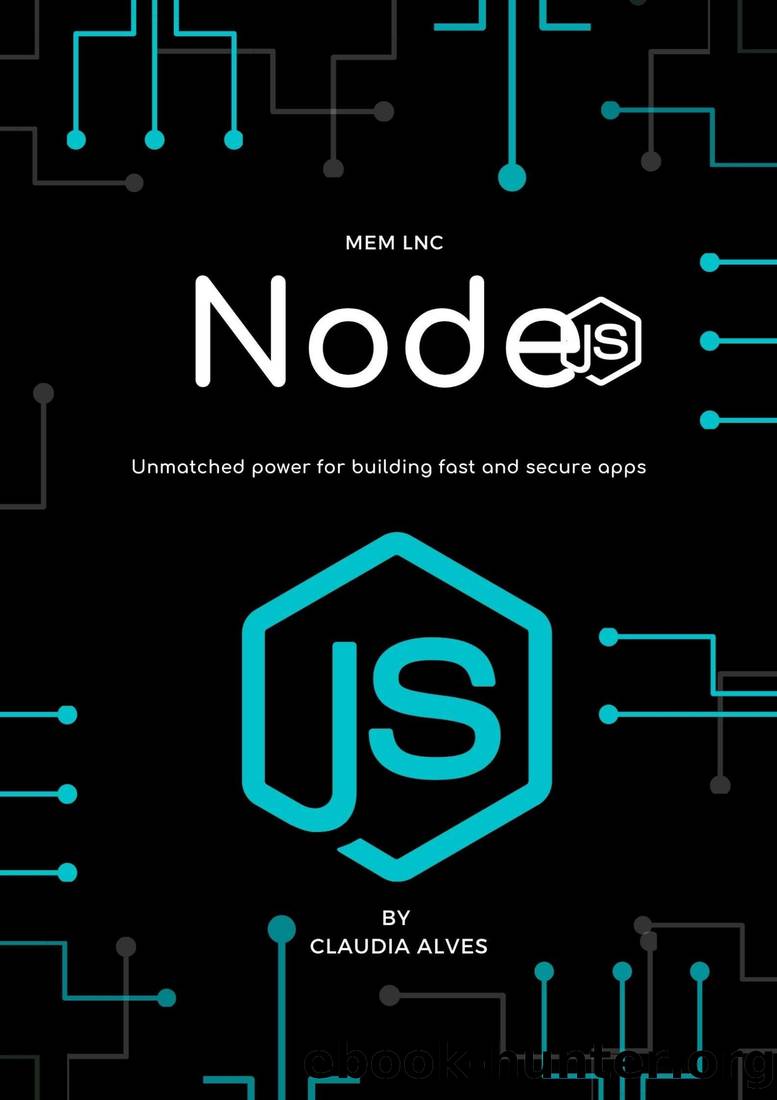Node.js: The Ultimate Beginner's Guide to Learn node.js Step by Step | 2020 by John Bach & mEm lnc

Author:John Bach & mEm lnc [Bach, John]
Language: eng
Format: azw3
Published: 2020-07-23T16:00:00+00:00
route (pathname);
response.writeHead (200, {"Content-Type": "text / html"});
response.write ("Hello World");
response.end ();
}
http.createServer (onRequest) .listen (8888);
console.log ("Server Started.");
}
exports.start = start;
And let's extend our index.js properly, that is, injecting our router's routing function into the server:
var server = require ("./ server");
var router = require ("./ router");
server.start (router.route);
Again, we are passing a function as parameters, but this is no longer a novelty for us.
If we start our application now ( node index.js as always), and make a request for a URL, you can see now by the application responses that our HTTP server uses our router and gives it the required path name:
bash $ node index.js
Request for / foo received.
About to route a request to / foo
I have omitted the annoying request response for /favicon.ico
Download
This site does not store any files on its server. We only index and link to content provided by other sites. Please contact the content providers to delete copyright contents if any and email us, we'll remove relevant links or contents immediately.
Hello! Python by Anthony Briggs(10116)
The Mikado Method by Ola Ellnestam Daniel Brolund(10007)
Dependency Injection in .NET by Mark Seemann(9512)
Sass and Compass in Action by Wynn Netherland Nathan Weizenbaum Chris Eppstein Brandon Mathis(7910)
Svelte with Test-Driven Development by Daniel Irvine(7776)
The Well-Grounded Java Developer by Benjamin J. Evans Martijn Verburg(7764)
Test-Driven Development with PHP 8 by Rainier Sarabia(7501)
Layered Design for Ruby on Rails Applications by Dementyev Vladimir;(7343)
Web Development with Django by Ben Shaw Saurabh Badhwar(6845)
Secrets of the JavaScript Ninja by John Resig Bear Bibeault(6629)
Secrets of the JavaScript Ninja by John Resig & Bear Bibeault(6628)
React Application Architecture for Production by Alan Alickovic(6533)
Jquery UI in Action : Master the concepts Of Jquery UI: A Step By Step Approach by ANMOL GOYAL(5869)
Kotlin in Action by Dmitry Jemerov(5293)
Software Architecture for Web Developers by Mihaela Roxana Ghidersa(4777)
Audition by Ryu Murakami(4761)
Accelerating Server-Side Development with Fastify by Manuel Spigolon Maksim Sinik & Matteo Collina(4621)
Hands-On Full-Stack Web Development with GraphQL and React by Sebastian Grebe(4379)
Solidity Programming Essentials by Ritesh Modi(4348)
